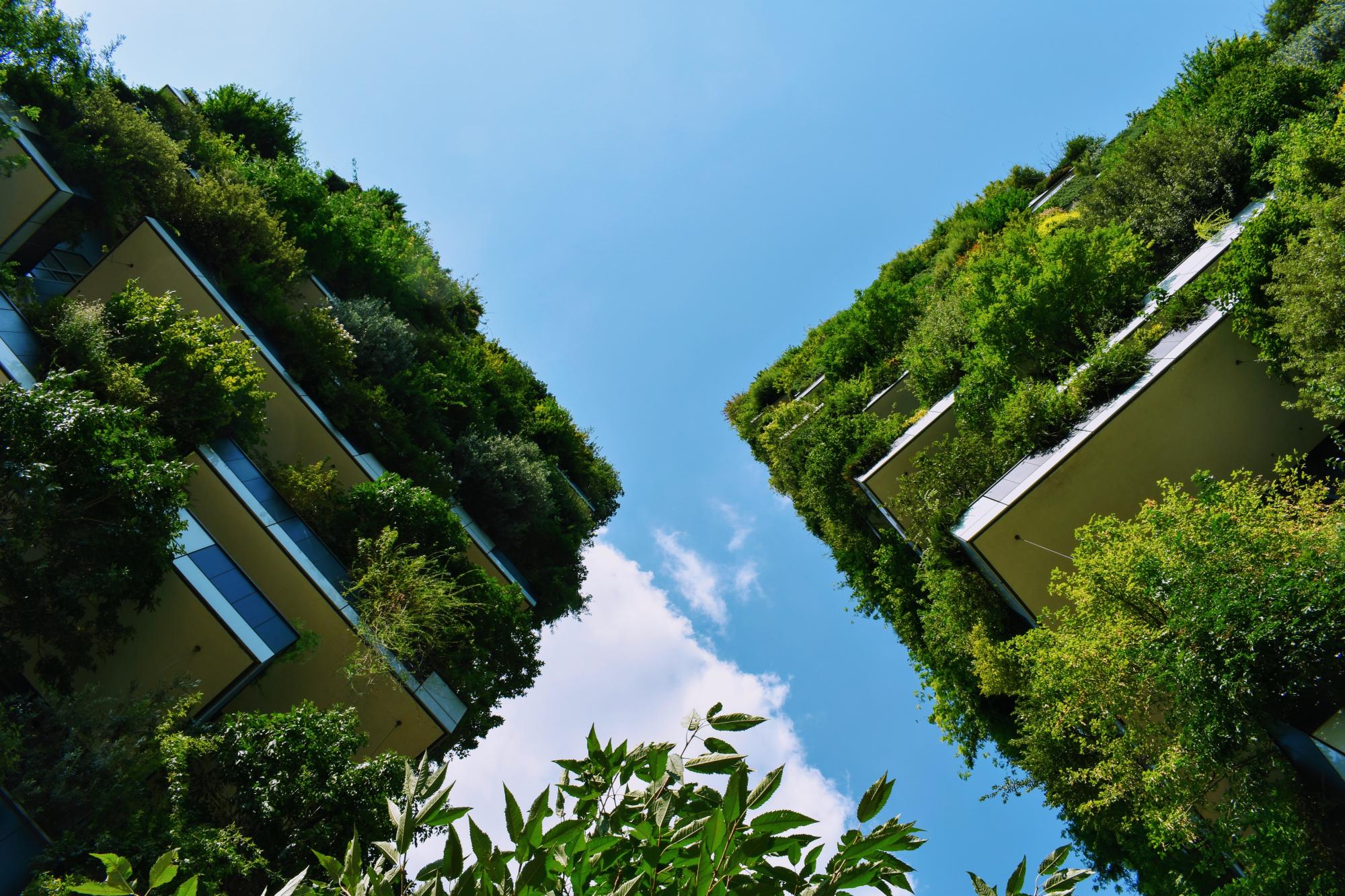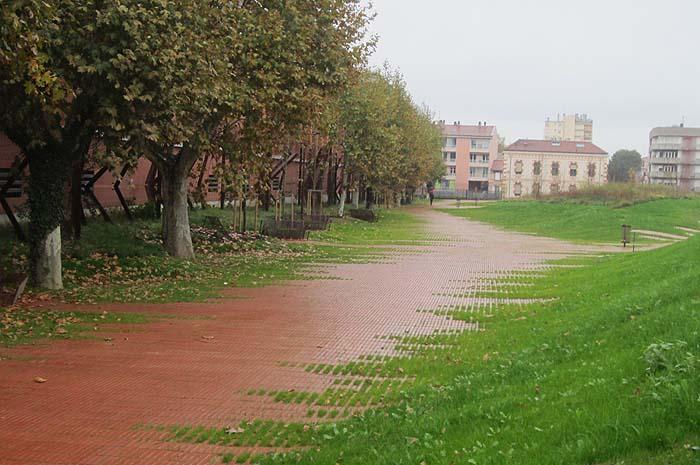Last updated: October 2021
The garden was designed by landscapers Michèle Orliac and Miquel Battle and realized for a cost of 3 million euros. This "new green lung", as presented by the City Hall of Toulouse, is part of a major urban project that provides for the creation of 500 housing units in the Niel District (Ref. 1). The project involved creating vegetation enmeshed benches (Ref. 7) and using permeable flooring materials that prevent water loss and reduce the potential of flooding (Ref. 8).
Overview
Nature-based solution
- Grey infrastructure featuring greens
- Green playgrounds and school grounds
- Parks and urban forests
- Pocket parks/neighbourhood green spaces
- Green areas for water management
- Swales and filter strips
Key challenges
- Water management (SDG 6)
- Flood protection
- Stormwater and rainfall management and storage
- Green space, habitats and biodiversity (SDG 15)
- Green space creation and/or management
- Environmental quality
- Air quality improvement
- Regeneration, land-use and urban development
- Promote natural styles of landscape design for urban development
- Social justice, cohesion and equity (SDG 10)
- Social interaction
- Health and well-being (SDG 3)
- Creation of opportunities for recreation
- Economic development and employment (SDG 8)
- Real estate development
- Cultural heritage and cultural diversity
- Protection of historic and cultural landscape/infrastructure
Focus
Creation of new green areas
Project objectives
To create a "new green lung", for the City of Toulouse, as part of a major urban project that provides for the creation of 500 housing units in the Niel District (Ref. 1)
Implementation activities
The “jardin Niel” public garden is the parade ground of the former "Caserne Niel" military barracks (Ref. 2). The architects behind the development of the garden Michèle & Miquel were selected in 2006 (Ref. 5). Its development program was conceived following, in particular, a consultation workshop organized in 2010 as part of the Empalot urban renewal project. Subsequently, the project was regularly informed by local democracy (Ref. 3). The green space was delivered and open for public use in December 2013 (Ref. 6). The benches were created in wire mesh so that the vegetation could grow through uninhibited (Ref. 7). The use of Flexbrick (open or wide-seamed ceramic tiles) in the park meanwhile offers technical advantages by favouring soil drainage, preventing drainage water loss and reducing the impact of floods caused by heavy rain (Ref. 8). The space is also equipped with rest areas, picnic areas, and playgrounds (Ref. 3). "Designed as a series of hills where walkers can find children's games , balloons and slides. It will be reserved for pedestrians and bicycles since all entrances for cars have been removed" (Ref. 1).
Main beneficiaries
- Citizens or community groups
- Young people and children
Governance
Management set-up
- Co-governance with government and non-government actors
Type of initiating organisation
- Local government/municipality
- District/neighbourhood association
Participatory approaches/ community involvement
- Unknown
Details on the roles of the organisations involved in the project
The Michèle & Miquel architecture and landscaping studio were responsible for the project's landscape architecture (Ref. 4, 5). The project was financed by the City of Toulouse and the European Regional Development Fund. The project is part of the Toulouse Integrated Urban Project, and consists of 19 actions, and more than 35 million euros (Ref. 3). It is also noted that housing associations are major facilitators of the site, as part of its conception (Ref. 6). The European Regional Development Fund funded 50% of the project (Ref. 1, 3).
Project implemented in response to ...
... an EU policy or strategy?
Yes
(The projects linked to the PUI project are required to respond to European cohesion policy on the promotion of economic development, competitiveness, employment, sustainable development as well as urban and territorial cohesion, by taking into account the environmental protection issue, and the fight for equal opportunities and against discrimination. (3, 9))
... a national policy or strategy?
Unknown
... a local policy or strategy?
Yes
(The project is part of the Toulouse Integrated Urban Project and has been planned out by Toulouse City Council, Toulouse metropolis and local associations in order to contribute to economic development, sustainable development and equal opportunities. (3) )
Financing
Total cost
€2,000,000 - €4,000,000
Source(s) of funding
- EU funds
- Public local authority budget
Type of funding
- Earmarked public budget
- Direct funding (grants, subsidies, or self-financed projects by private entities)
Non-financial contribution
Unknown
Impacts and Monitoring
Environmental impacts
- Environmental quality
- Improved air quality
- Water management and blue areas
- Increased protection against flooding
- Improved stormwater management
- Green space and habitat
- Promotion of naturalistic styles of landscape design for urban development
- Increased green space area
Economic impacts
- Increase of green jobs (e.g. paid employment positions)
- Stimulate development in deprived areas
- Other
Socio-cultural impacts
- Social justice and cohesion
- Improved social cohesion
- Improved access to urban green space
- Increased visibility and opportunity for marginalised groups or indigenous peoples
- Increased opportunities for social interaction
- Health and wellbeing
- Gain in activities for recreation and exercise
- Cultural heritage and sense of place
- Promotion of cultural diversity
- Protection of historic and cultural landscape / infrastructure
- Increased sense of place identity, memory and belonging
- Other
Type of reported impacts
Achieved impacts
Presence of formal monitoring system
Unknown
Presence of indicators used in reporting
No evidence in public records
Presence of monitoring/ evaluation reports
No evidence in public records
Availability of a web-based monitoring tool
No evidence in public records
References
(1) Saint-Sernin, David. (2013). Le nouveau jardin de la caserne Niel ouvert au public. Available at: Source link (Accessed: September 21, 2020).
(2) DIVISARE. [no date]. Jardin Niel. Available at: Source link (Accessed: September 21, 2020).
(3) L'Europe en Occitanie. [no date]. Le projet urbain intégré de la mairie de Toulouse. Available at: Source link (Website not available in 2020).
(4) Marinesque, Didier. (2011). Un lauréat du prix FAD pour le futur jardin Niel à Toulouse. Available at: Source link (Accessed: September 21, 2020).
(5) Toulouseinfos. (2013). Toulouse: le jardin Niel ouvre ses portes ce mardi. Available at: Source link (Accessed: September 21, 2020).
(6) Ladepeche. (2016). Visitez le jardin Niel, un trait d'union de verdure. Available at: Source link (Accessed: September 21, 2020).
(7) Gros, Jean-Noël. (2014). Le jardin Niel, un immense voile qui ondule. Available at: Source link (Accessed: September 21, 2020).
(8) Diseno de la ciudad. [no date]. Tejido cerámico en el Jardín Niel, Toulouse. Available at: Source link (Website not available in 2020).
(2) DIVISARE. [no date]. Jardin Niel. Available at: Source link (Accessed: September 21, 2020).
(3) L'Europe en Occitanie. [no date]. Le projet urbain intégré de la mairie de Toulouse. Available at: Source link (Website not available in 2020).
(4) Marinesque, Didier. (2011). Un lauréat du prix FAD pour le futur jardin Niel à Toulouse. Available at: Source link (Accessed: September 21, 2020).
(5) Toulouseinfos. (2013). Toulouse: le jardin Niel ouvre ses portes ce mardi. Available at: Source link (Accessed: September 21, 2020).
(6) Ladepeche. (2016). Visitez le jardin Niel, un trait d'union de verdure. Available at: Source link (Accessed: September 21, 2020).
(7) Gros, Jean-Noël. (2014). Le jardin Niel, un immense voile qui ondule. Available at: Source link (Accessed: September 21, 2020).
(8) Diseno de la ciudad. [no date]. Tejido cerámico en el Jardín Niel, Toulouse. Available at: Source link (Website not available in 2020).


